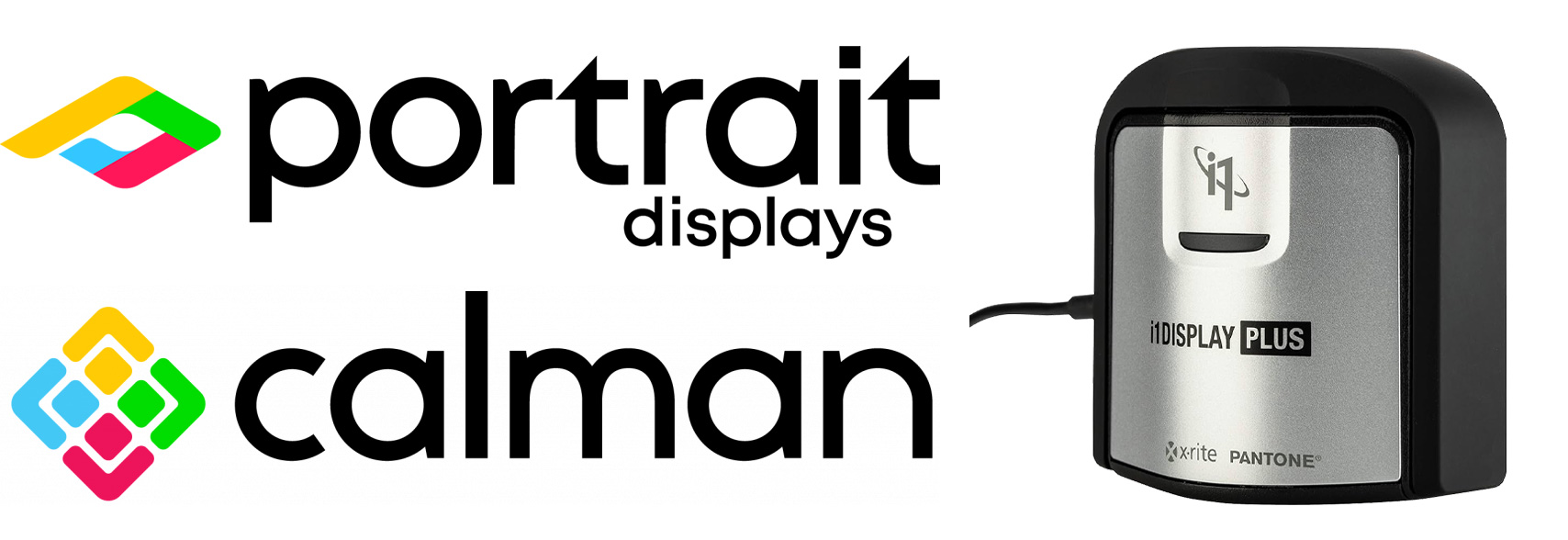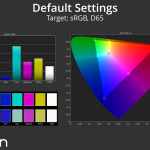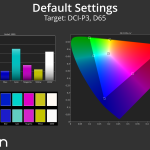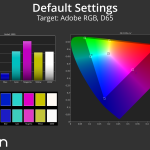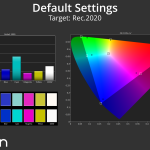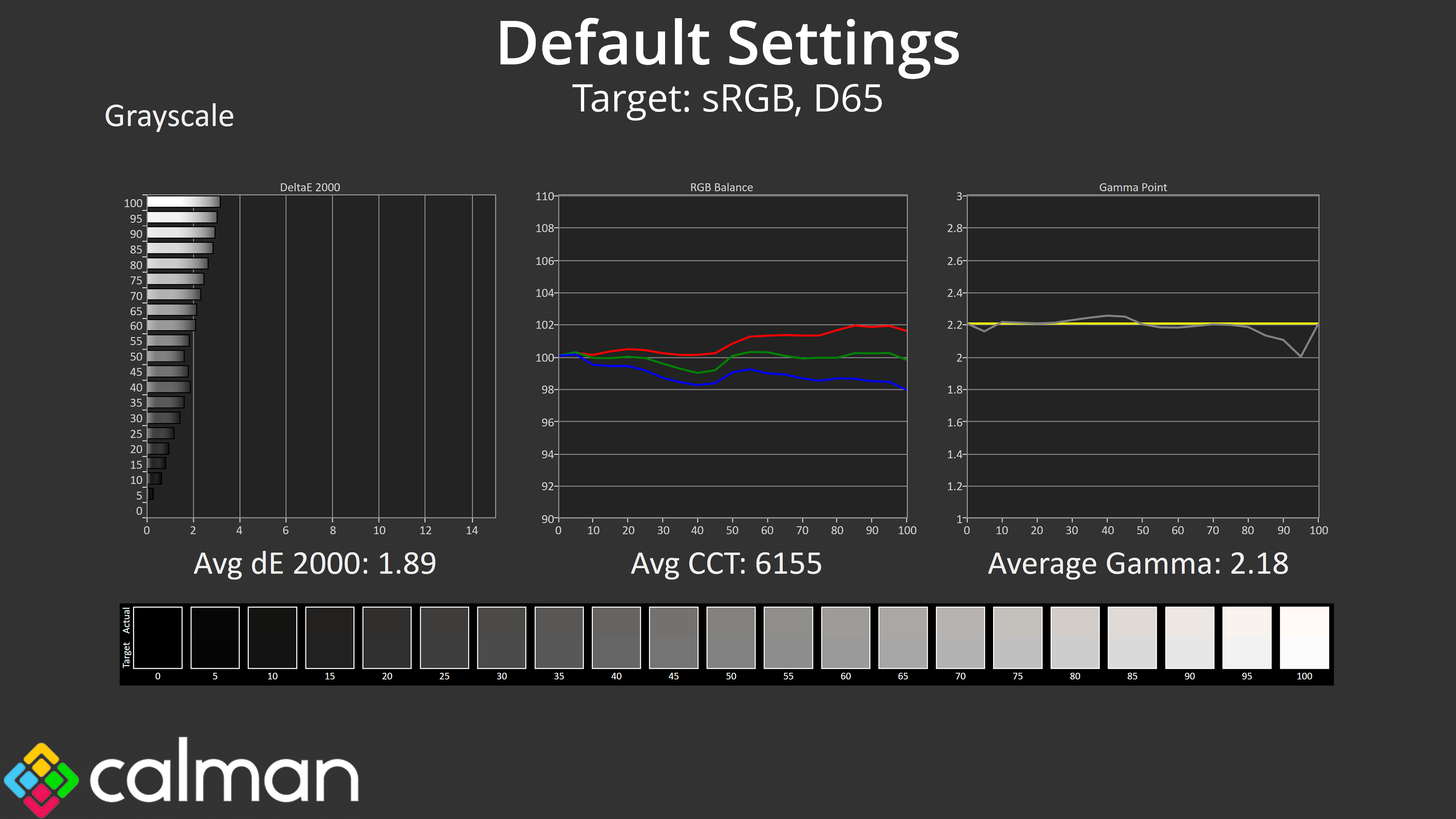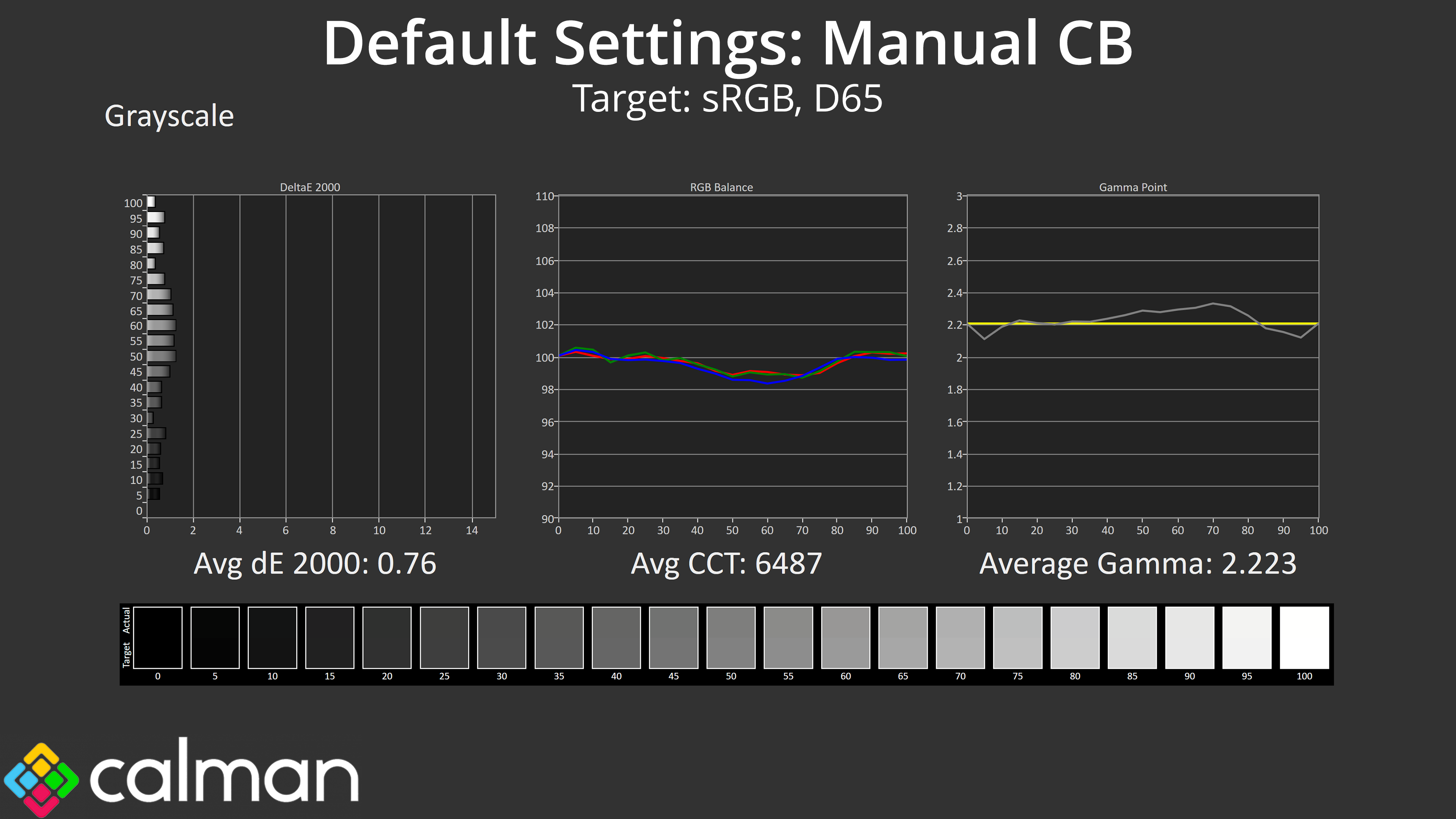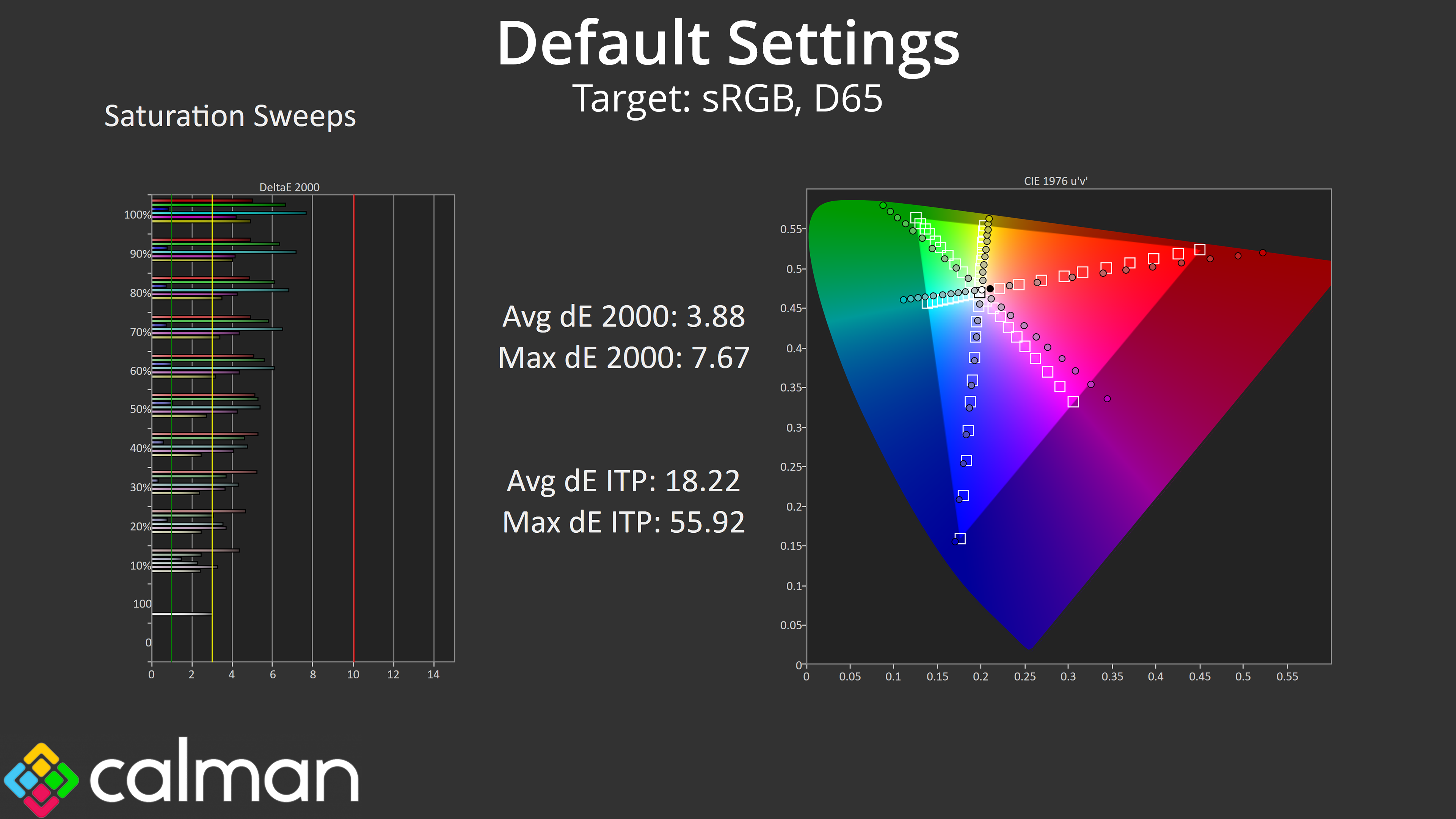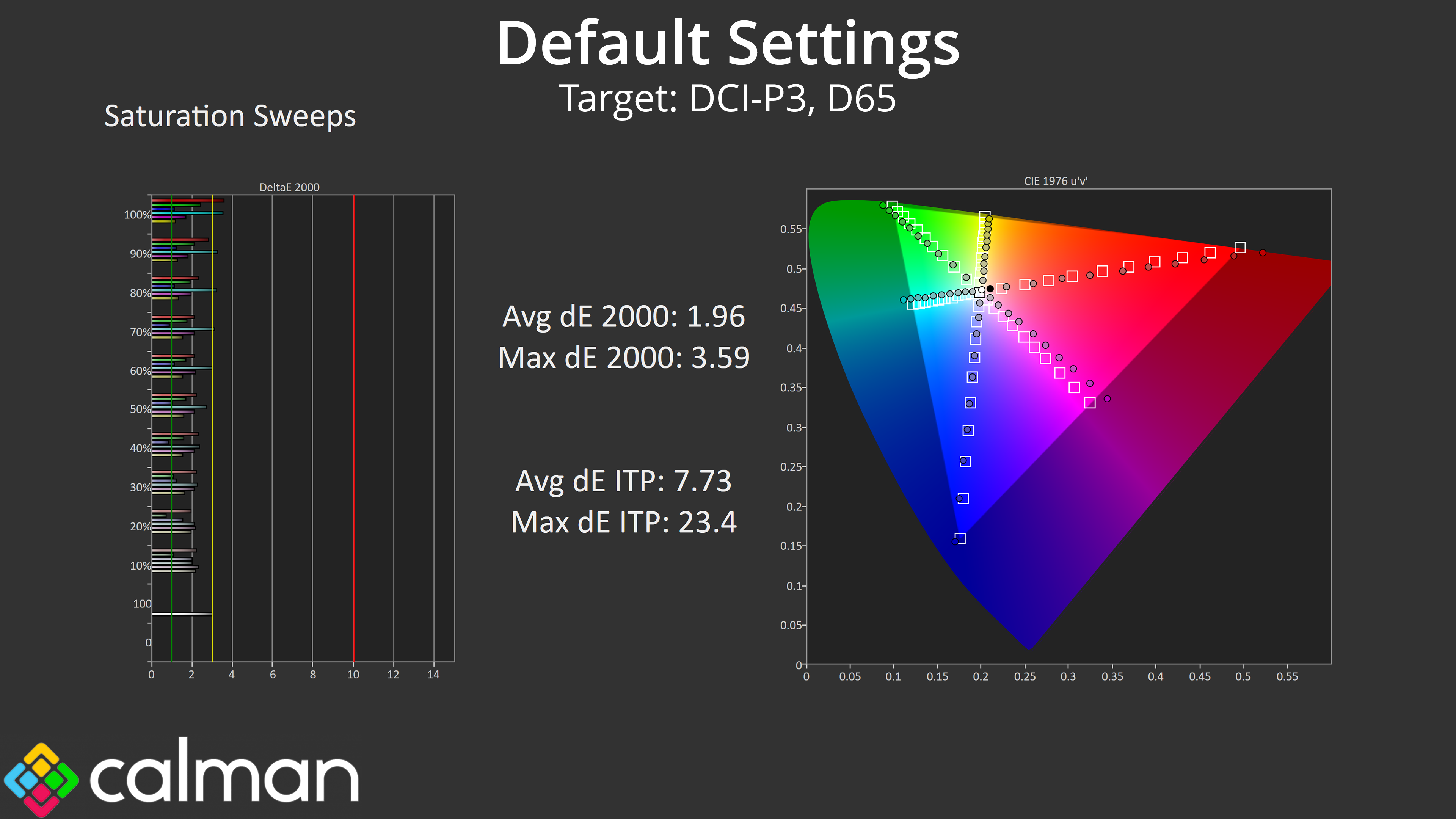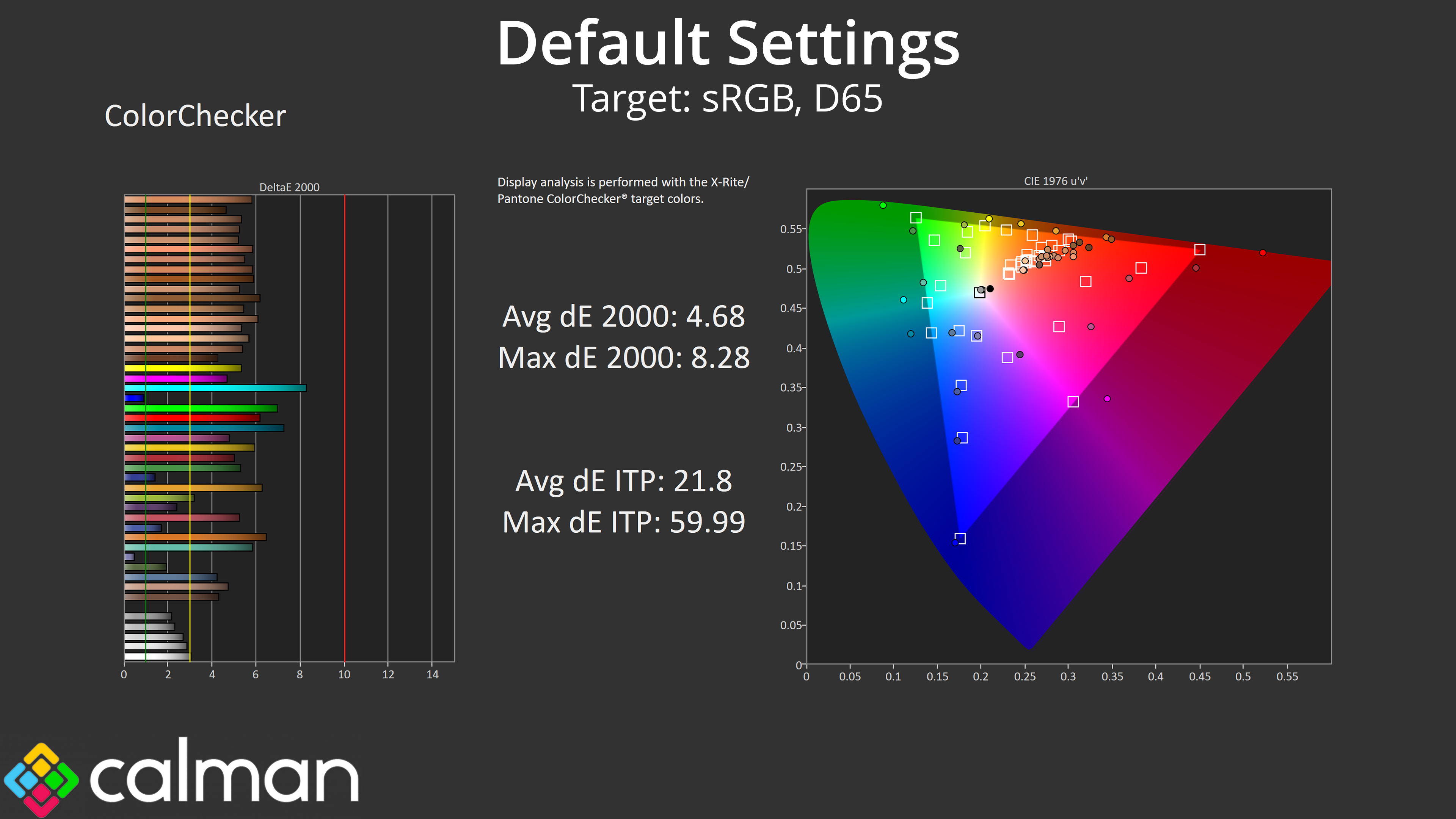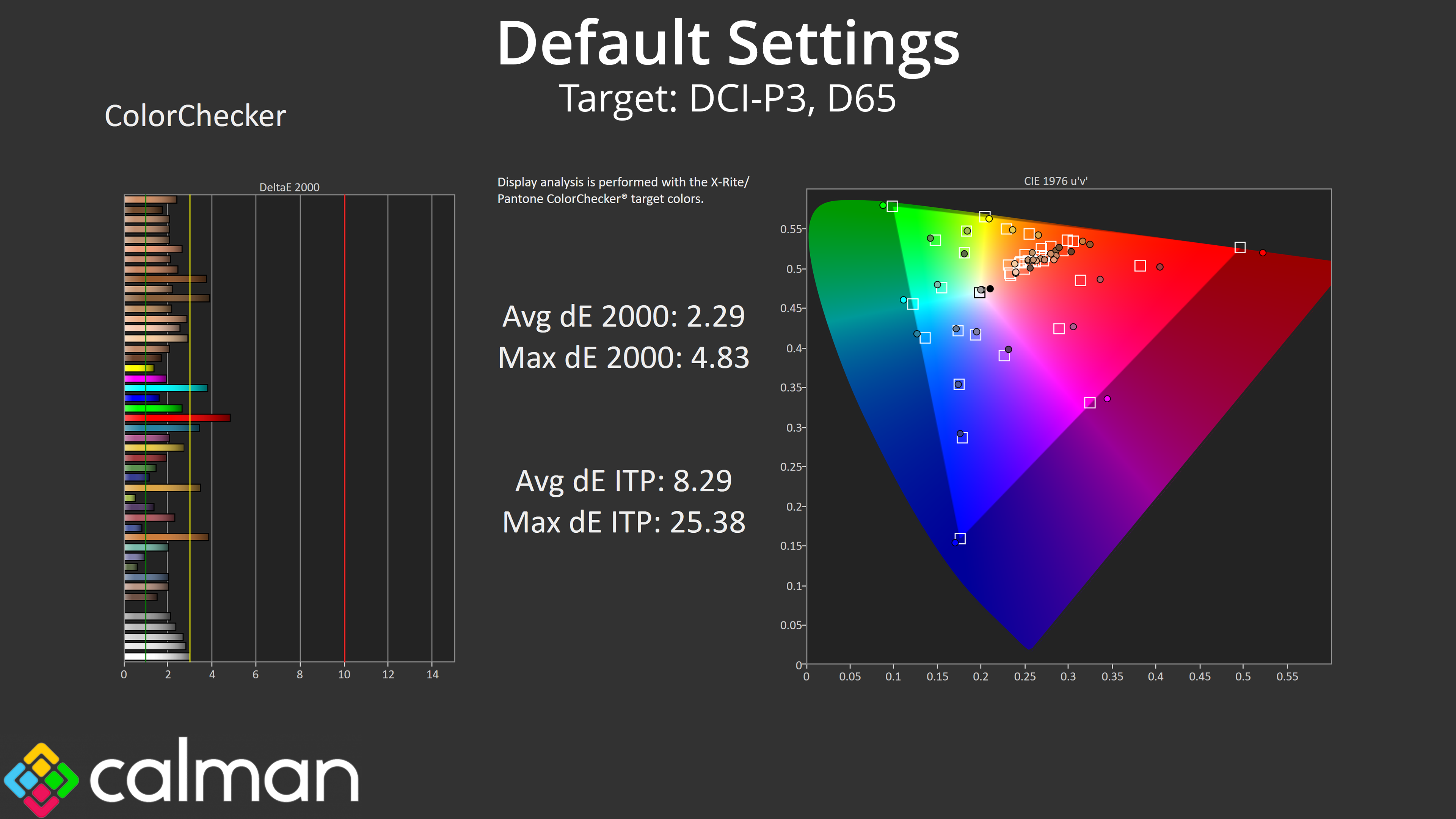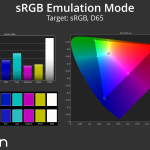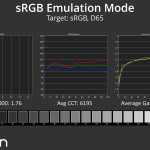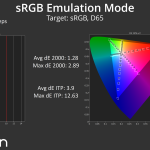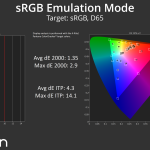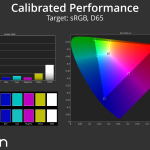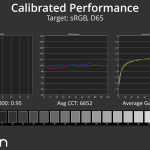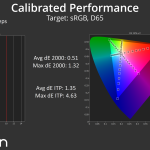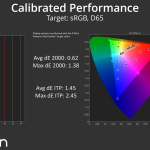Our main test involves using an X-Rite i1 Display Pro Plus colorimeter and utilising Portrait Display's Calman Ultimate software. The device sits on top of the screen while the software generates colour tones and patterns, which it compares against predetermined values to work out how accurate the screen is.
The results show:
- A monitor’s maximum brightness in candelas or cd/m2 at various levels set in the OSD.
- A monitor’s contrast ratio at various brightness levels in the OSD.
- Gamut coverage, primarily focusing on sRGB and DCI-P3 colour spaces.
- Greyscale accuracy, measured across 20 shades, with an average colour balance reported.
- The exact gamma levels, with a comparison against preset settings in the OSD.
- The colour accuracy, expressed as a Delta E ratio, with a result under 3 being fine for normal use, and under 2 being great for colour-accurate design work.
We first run these tests with the display in its out-of-the-box state, with all settings on default. If there is an sRGB emulation option or other useful mode then we may test that too. We then calibrate the screen using the Calman Ultimate software and run the tests again.
You can read more about our test methodology HERE.
Default settings
Brightness and Contrast (Full Screen)
| OSD Brightness | White Luminance (cd/m2) | Black Luminance (cd/m2) | Contrast Ratio |
| 0% | 28.4 | 0.00 | ~Infinite |
| 25% | 111.2 | 0.00 | ~Infinite |
| 50% | 193.9 | 0.00 | ~Infinite |
| 75% | 265.0 | 0.00 | ~Infinite |
| 100% | 307.6 | 0.00 | ~Infinite |
Kicking off with our brightness testing, we can straight away see that this is indeed the brightest OLED monitor we've reviewed, peaking at just below 310 nits for a full screen white. It gets very dim, too, with a minimum of just 28 nits, while contrast is effectively infinite as with any OLED.
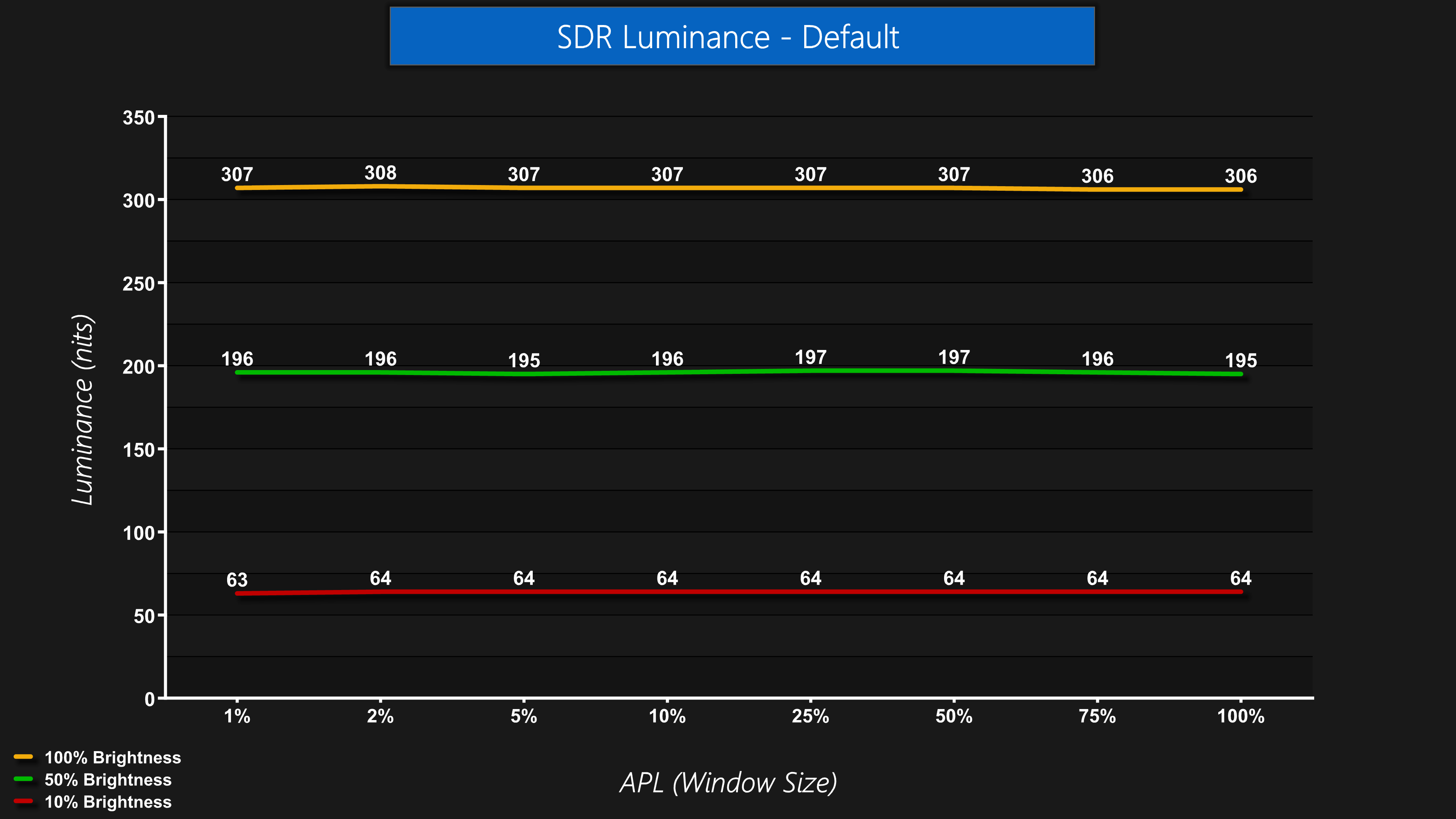
The good news is that despite the higher brightness, the output luminance is steady regardless of the window size (APL), so you won't notice the screen dimming or brightening in SDR, regardless of what's on screen.
Gamut (CIE 1976)
| Colour space | Coverage (%) |
| sRGB | 100 |
| DCI-P3 | 99.2 |
| Adobe RGB | 97.8 |
| Rec.2020 | 80.4 |
We see very wide gamut coverage as we'd expect from a QD-OLED panel, it well exceeds the sRGB space and delivers 99.2% coverage of DCI-P3, alongside 97.8% reporting of the Adobe RGB colour space and 80.4% coverage for Rec.2020.
Greyscale
Default greyscale performance is another solid area for the 272QP X50. It does have a slight warm tint, but the average CCT of 6155K is only a 5% deviation from the 6500K target, so it's hardly a significant error. Gamma tracking is nice and accurate too, closely hugging the 2.2 target and averaging 2.18. Overall, the greyscale dE 2000 of 1.89 indicates a high level of accuracy out of the box.
I also tested with a manual colour balance, keeping the Blue channel at 50, but reducing Red to 47 and Green to 48. That delivered an improvement to the average CCT and the average greyscale dE 2000, though it's worth pointing out that enabling manual colour balance also affects brightness for some reason – at 70%, we dropped from 264 nits to 86 nits, so that's a trade-off to keep in mind.
Saturation
Looking at our saturation sweeps, as we'd expect from a QD-OLED monitor we do see high levels of over-saturation compared to the sRGB space, though things are more accurate compared to the DCI-P3 space.
Colour Accuracy
That carries over to our colour accuracy testing, with an average dE2000 of 4.68 relative to the sRGB space, though this improves to an average deltaE of 2.29 when looking at the DCI-P3 results.
sRGB Emulation Mode
Thankfully MSI has included an sRGB emulation mode in the OSD, and it does a great job at clamping the gamut, while greyscale performance is still just a touch warm but generally accurate. The saturation and colour accuracy average dEs also improve compared to stock, with results in the 1.2-1.4 range, indicating high levels of accuracy, so this mode is well worth using.
Calibrated Results
As ever, full calibration will be required for the best possible results, and this improved things further – the greyscale average deltaE hit just 0.95, and both saturation and colour accuracy results dropped below 1. It's not really necessary for gaming but you could absolutely use this OLED monitor for colour sensitive work, too.
 KitGuru KitGuru.net – Tech News | Hardware News | Hardware Reviews | IOS | Mobile | Gaming | Graphics Cards
KitGuru KitGuru.net – Tech News | Hardware News | Hardware Reviews | IOS | Mobile | Gaming | Graphics Cards


